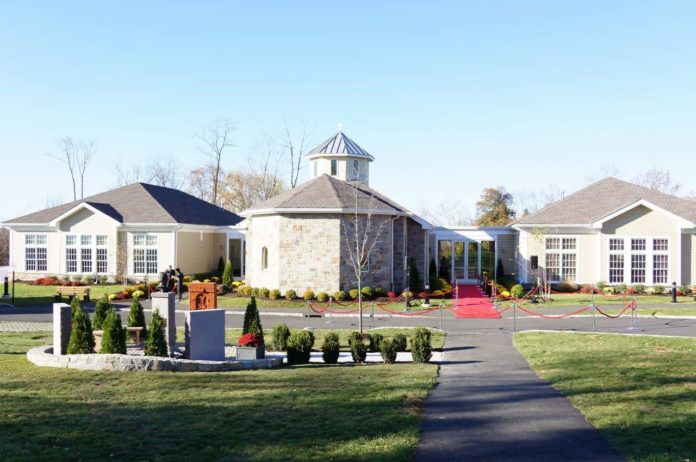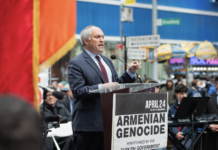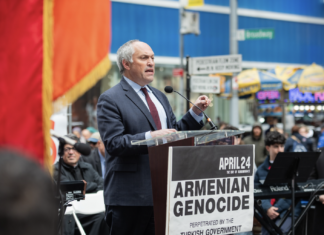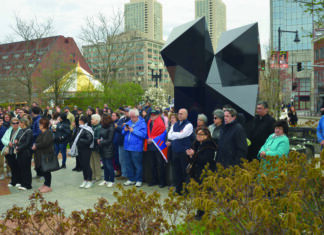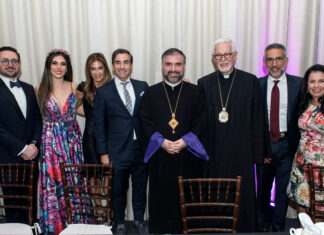ARMONK, N.Y. — St. Nersess Armenian Seminary “was the admirable vision of founder and first dean, Archbishop Tiran Nersoyan,” stated Diocesan Primate Archbishop Khajag Barsamian, during a recent interview. “He saw the crucial need for an institution that would educate and prepare young men for the priesthood in America.”
And now more than 50 years later, another historic chapter has opened for the Armenian Church in America. On November 12, 2016, the new campus, and the Karekin I Theological Center of St. Nersess Armenian Seminary were officially opened, and St. Hagop Chapel consecrated.
Officiating over the ceremonies was the Catholicos of All Armenians Karekin II, assisted by the Primate of the Eastern Diocese Archbishop Khajag Barsamian, and the Primate of the Western Diocese Archbishop Hovnan Derderian.
The ribbon-cutting formality included a bust of Archbishop Tiran Nersoyan sculpted by Yeretzgin Yefkin Megherian in memory of her husband, Rev. Vartan Megherian, as well as a Founders Garden featuring a khatchkar from Armenia, and two granite monuments inscribed with donors’ names.
One million dollars was raised for the renovation of the Armonk campus, with philanthropists Haig and Elza Didizian donating $3 million for the Karekin I Theological Center, St. Hagop Chapel, and purchase of the land.
It was 15 years ago that Archbishop Khajag had asked the Didizians to have a building erected in the name of Catholicos of All Armenians Karekin I. The project was started by the Didizians in New Rochelle, eight years ago.



